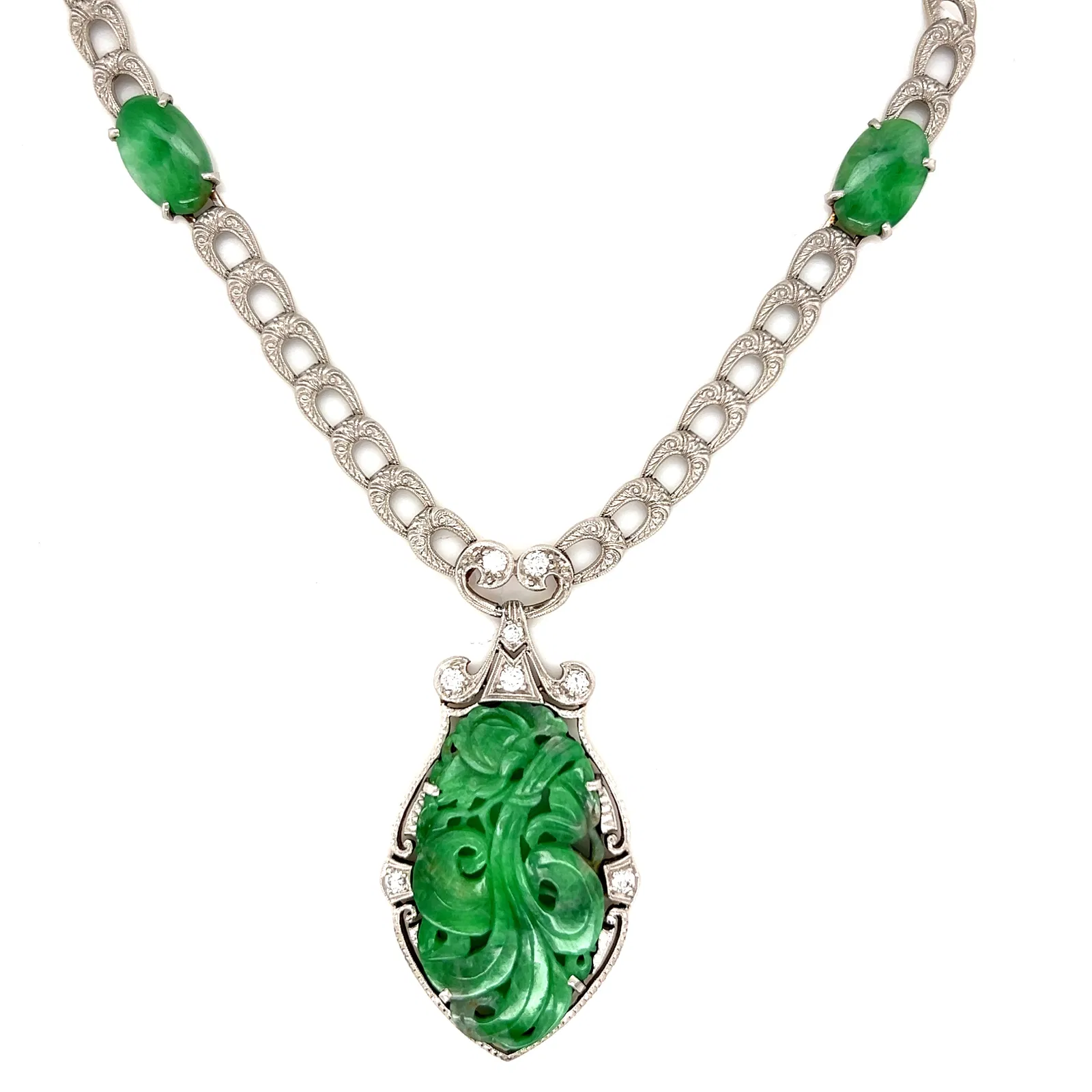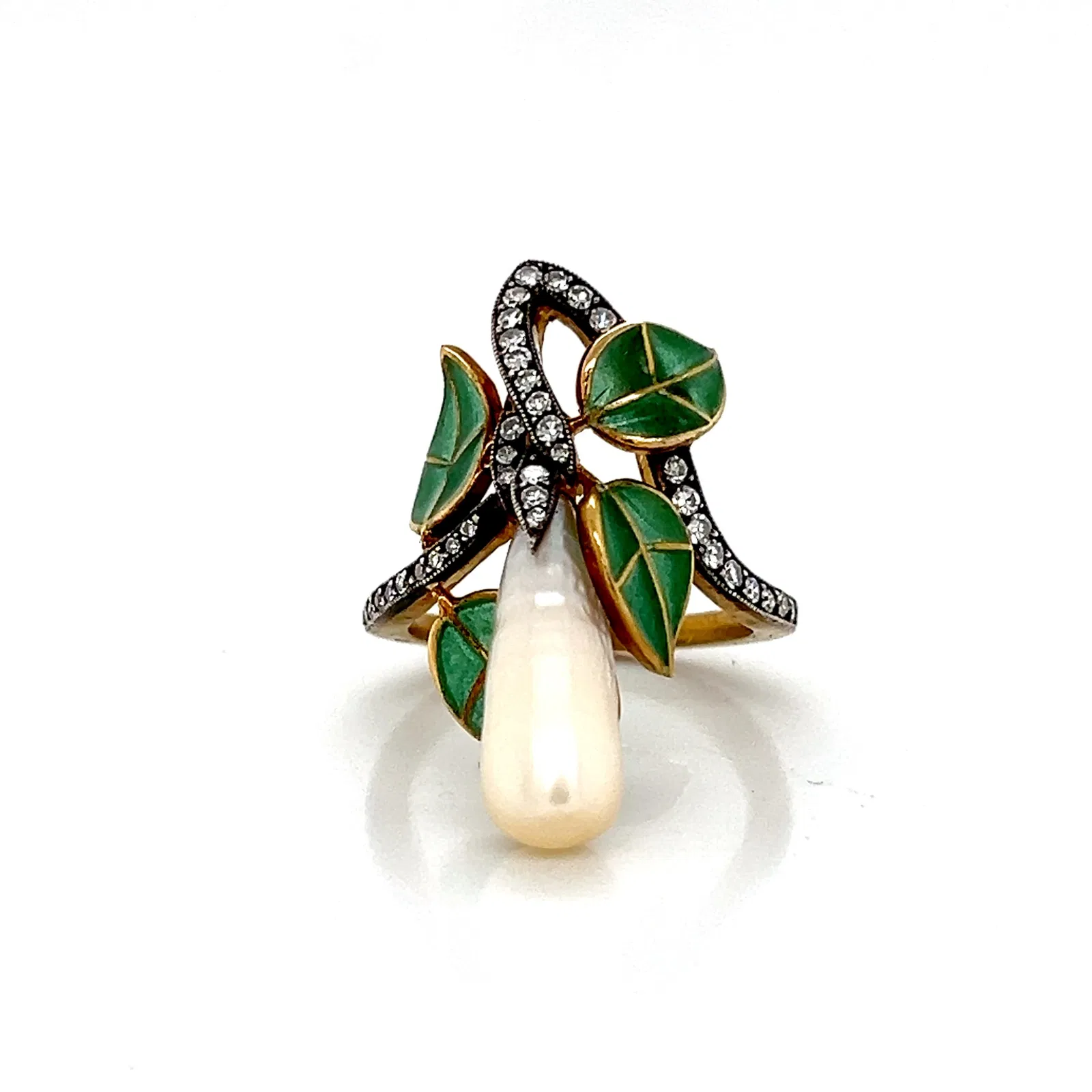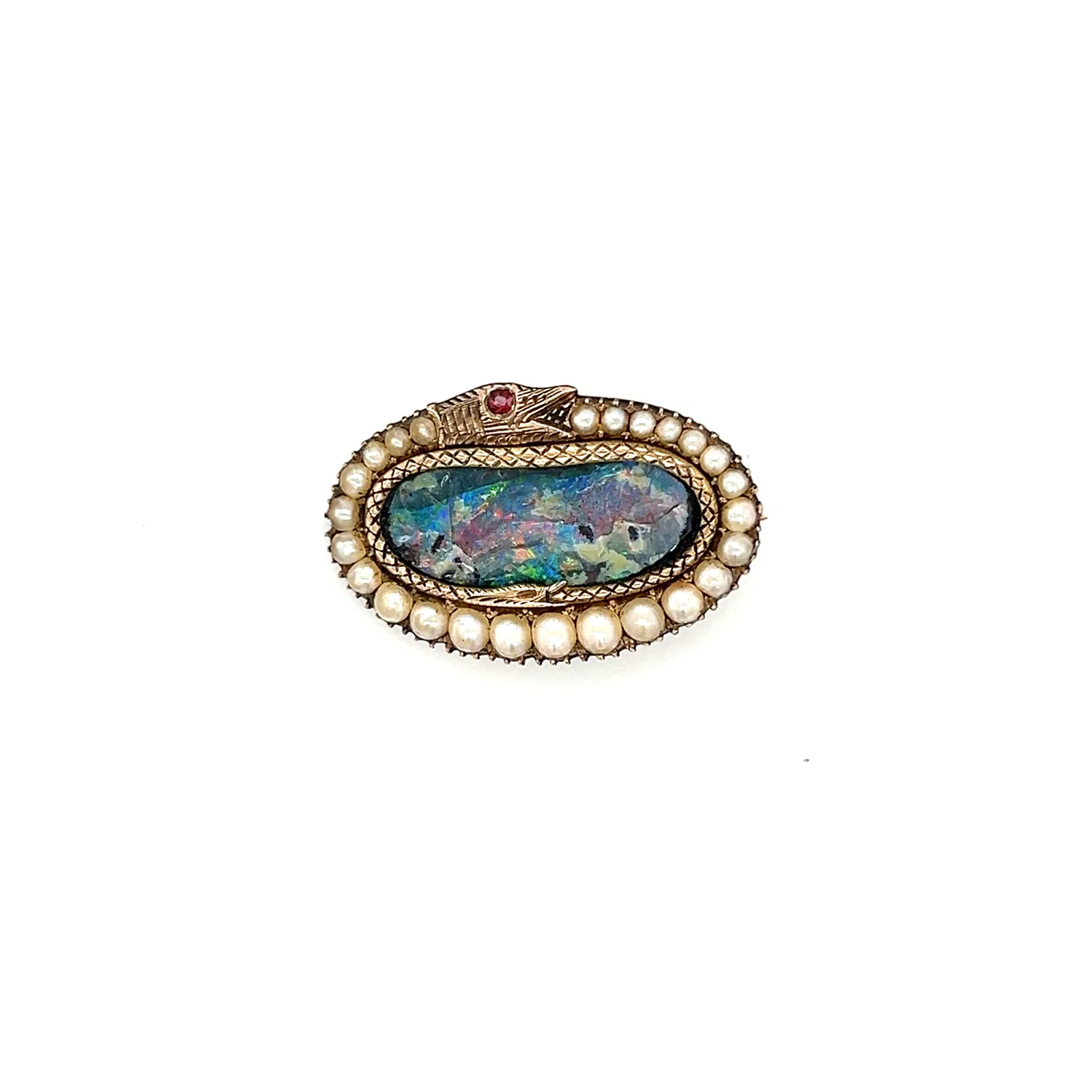Art Deco to Victorian: Antique Jewelry Styles Available at Associated Estate & Appraisal
Associated Estate & Appraisal of Cranston, Rhode Island will soon present its Summer Premier Fine Jewelry & Timepiece Auction. This 206-lot event offers a broad selection of contemporary and vintage jewelry, featuring antique styles and designer lots. Here are some key items in the catalog.

Allsopp & Allsopp Art Deco Necklace
Leading this sale is an Art Deco necklace by Allsopp & Allsopp (lot #140; estimate: USD 2,000 – $4,000). This fine specimen includes carved jade and diamonds in a platinum and 14-karat yellow gold setting. The center pierced jade pendant features a swirling design; oval-cut jades set around a horseshoe link chain accent the piece.
Allsopp & Allsopp, or Allsopp Brothers Jewelry, was a brand built by two English-American immigrant brothers in the 1880s. They both specialized in jewelry and helped to popularize finger and birthstone rings. The brothers manufactured and sold their creations in Newark, New Jersey through the early 20th century, selling under a variety of business names. Like other designers of the era, the Allsopp Brothers embraced the bold modernism of the Art Deco era. Their work reflects a preference for bright gems and innovative designs.

Victorian Gold and Amethyst Necklace
Also notable in this sale is an intricate Victorian gold and amethyst necklace (lot #134; estimate: $2,000 – $2,500). The deep purple stones are set in 14-karat gold crafted in flower-dotted links. The piece centers on a teardrop-shaped amethyst pendant and measures over 20 inches in length.
Defined by the reign of Queen Victoria of England, the Victorian era encompasses the middle to end of the 19th century. The period is known for its strict moral code, modest fashion, and established gender roles. Clothes and accessories communicated wealth and social status in Victorian society. The Industrial Revolution brought new manufacturing techniques and made jewelry affordable to more people in society. Early Victorian-era jewelry embraced Romanticism and elaborate details. Later, Victorian styles shifted to include mourning jewelry and purely aesthetic craftsmanship.

Art Nouveau Plique-à-Jour Enamel Ring
From the Art Nouveau period comes a plique-à-jour enamel, 18-karat gold, diamond, and pearl ring (lot #151; estimate: $1,500 – $2,000). Shaped like a twisting branch with leaves, this piece is studded with diamonds around the band. Dropping from the center of the ring is a lustrous, elongated baroque pearl.
The plique-à-jour enameling technique has existed for centuries and was first developed by Italian and French artisans. However, it rose to particular prominence after being rediscovered in the early 20th century. With careful soldering, a plique-à-jour jeweler can create translucent enamel that evokes the beauty of stained glass windows. Plique-à-jour enamel jewelry was especially popular during the Art Nouveau era, with its preference for natural themes, flowing lines, and mystical elements. The technique brought light to myriad brooches, pendants, and rings.

Georgian Ouroboros Brooch
Another key lot predates the Victorian era. This Georgian ouroboros brooch is composed of 9-karat gold and features two ouroboros snakes encircling an oval opal (lot #124; estimate: $600 – $800). The outermost snake has a body of graduated pearls with a ruby eye, while the inner serpent is formed of cross-hatched gold.
The ouroboros symbol has emerged in multiple societies across history and contains various meanings, including rebirth and the cycle of life. It was popular in Georgian jewelry and appears in many rings, brooches, and other items. Spanning just over a century, the Georgian era was an important period for jewelry. Craftspeople made each piece by hand and placed particular emphasis on symbolic details. This occurred in a society that was gradually shifting from tradition and mystical beliefs to a preference for science and reason during the Enlightenment. Many Georgian jewelry items reflect this growing tension of the period.
Associated Estate & Appraisal’s Summer Premier Fine Jewelry & Timepiece Auction will begin at 11:00 AM EDT on September 28, 2024. Visit Bidsquare to browse the full catalog or register to place a bid. Find additional coverage of this event on Auction Daily.









